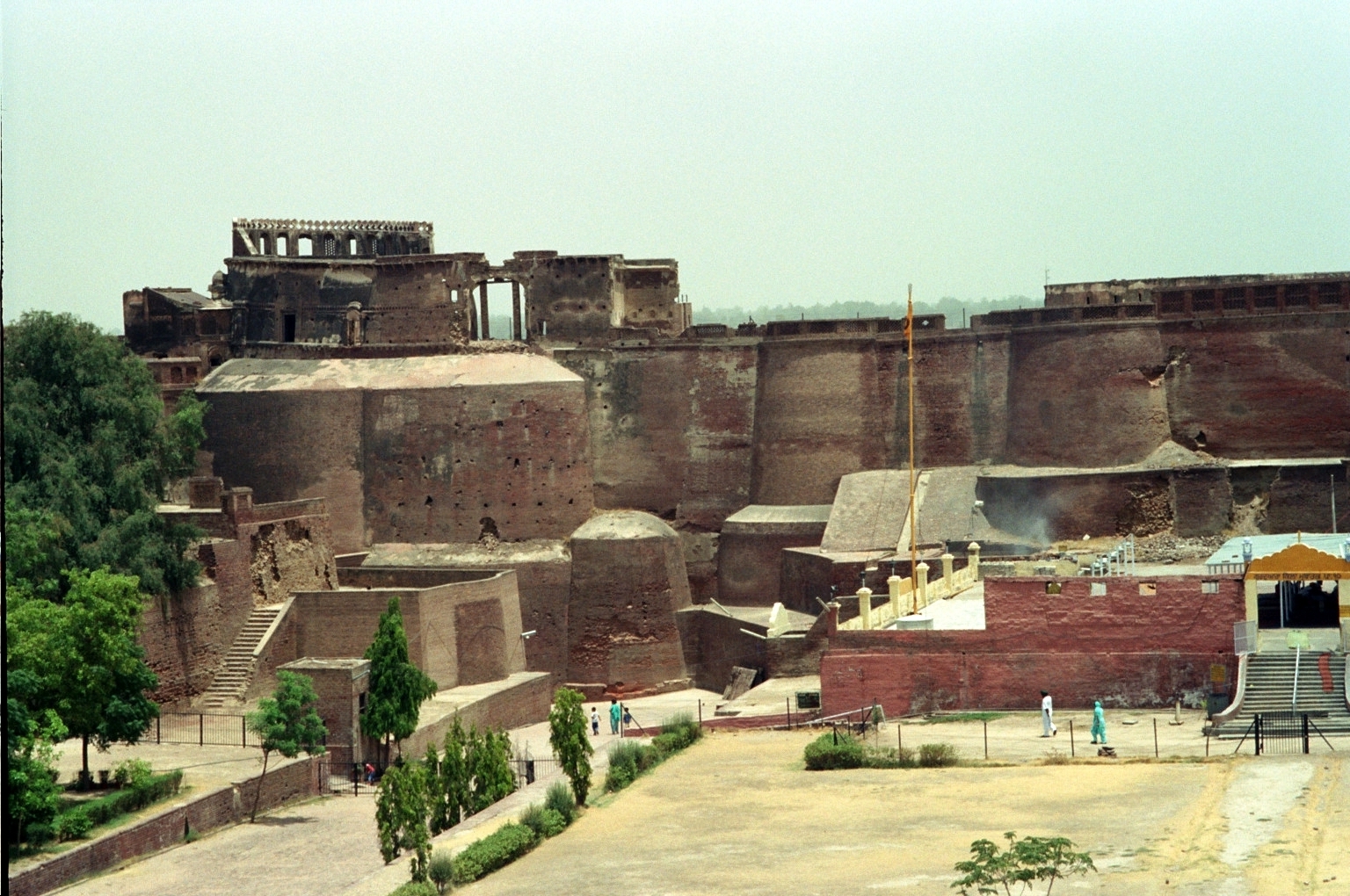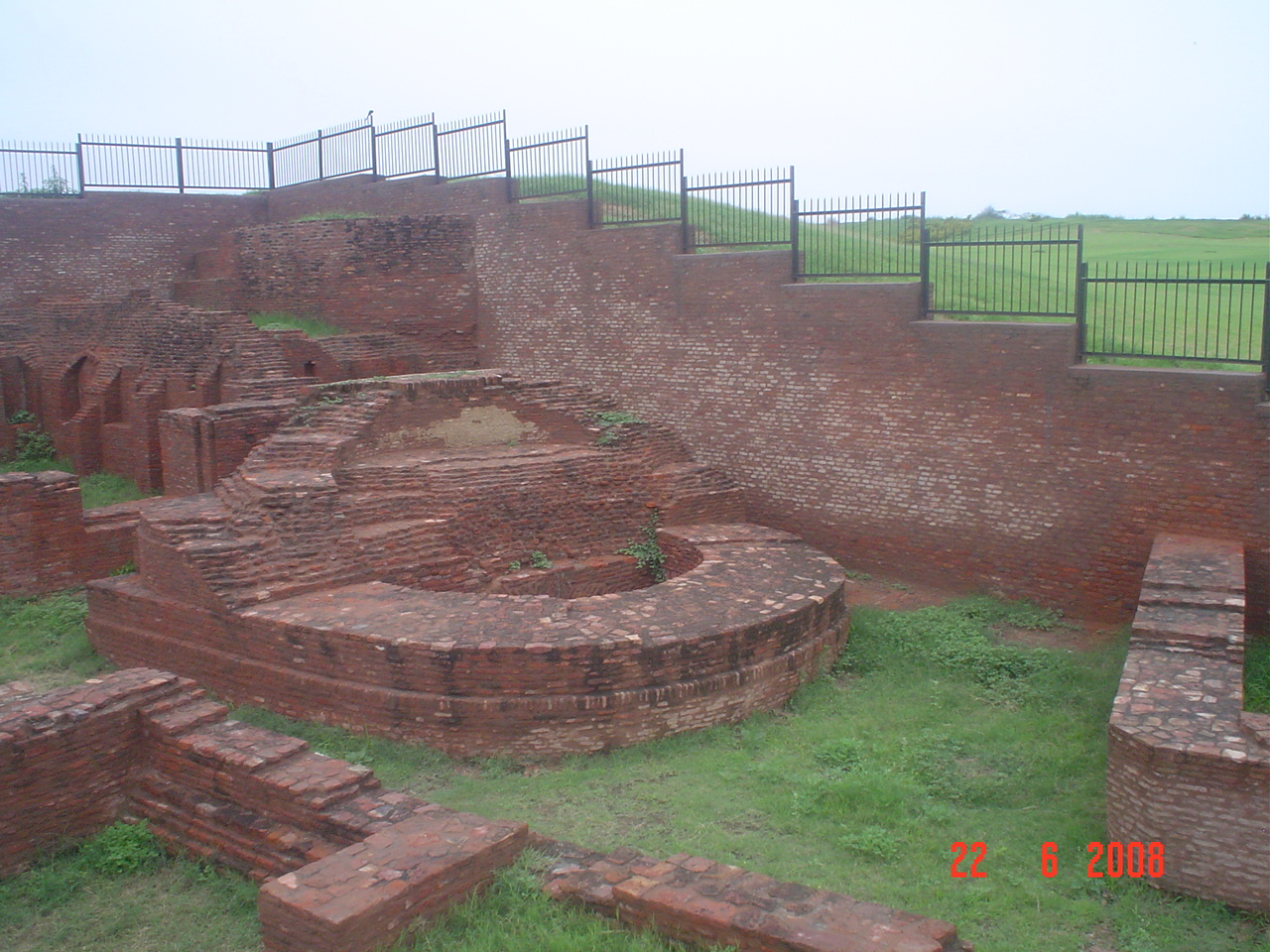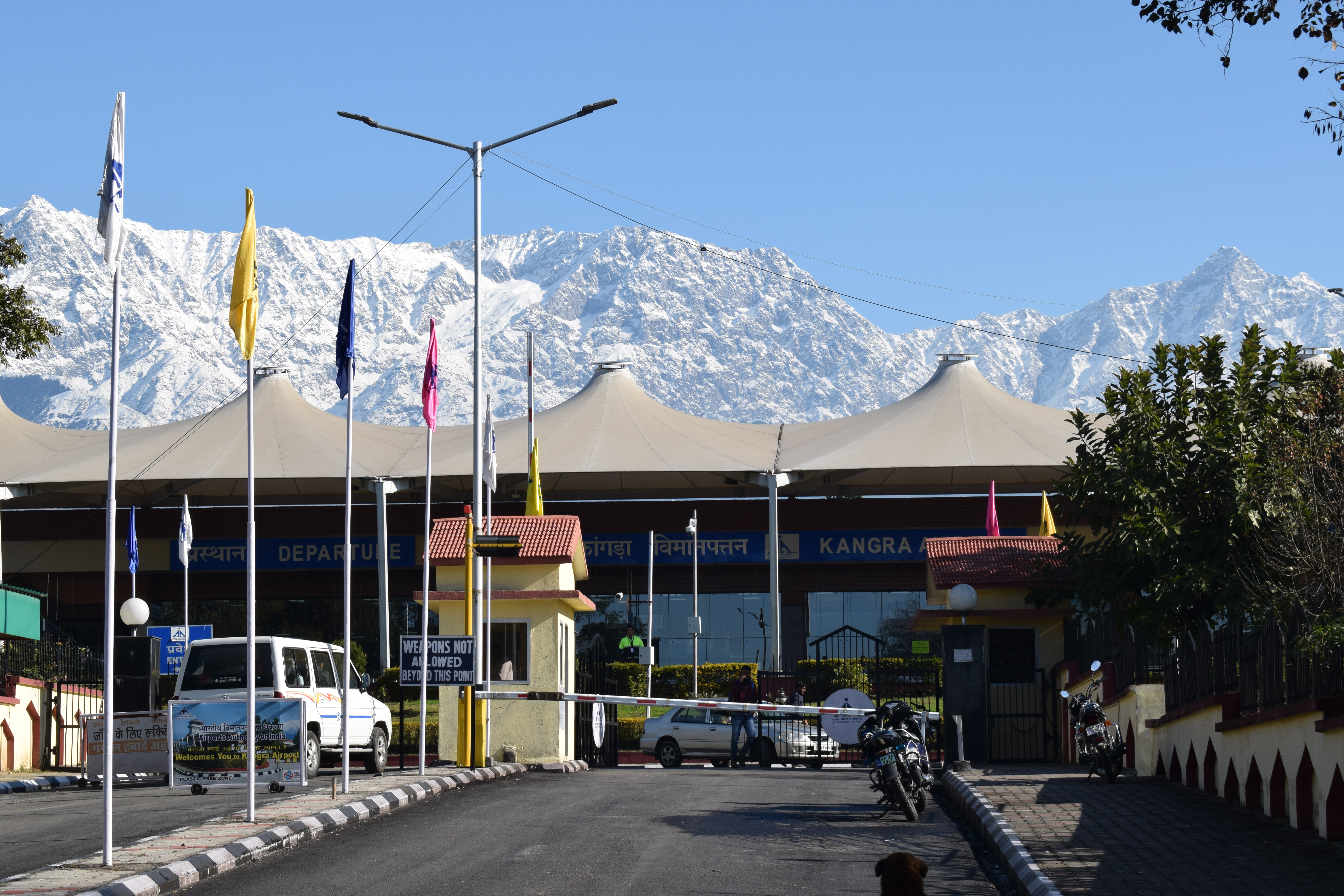|
Anangpal Tomar I
Anangpal II, popularly known as Anangpal Tomar, was a ruler from the Tomar Rajput dyansty. He is known to have established and populated Delhi in the 11th century. He is often confused with Anangpal I, the founder of Tomar Dynasty of Delhi, who had reigned during the 8th century. He traced the lineage to Chandravanshi Kshatriya kings, namely Arjuna from the epic Mahabharata (nowadays commonly referred to as Tomar/Tanwar). Ancestry According to legend Tomar were descendant of kuru king Parikshit. Territory The territory ruled by the Tomars was called ''Hariyana'' (literally 'Abode of God'). This ''Hariyana'' was many folds in size compared to the current state of Haryana. The Tomar Empire during the reign of Anangpal II extended over various parts of Delhi, Haryana, Punjab, Himachal Pradesh, Uttar Pradesh, Madhya Pradesh and Rajasthan. The capital of Tomars changed a few times during the course of 457 years they ruled in the northern India. The first capital of the Tom ... [...More Info...] [...Related Items...] OR: [Wikipedia] [Google] [Baidu] |
Tomara Dynasty
The Tomara dynasty (also called Tomar in modern vernaculars because of schwa deletion) dynasty ruled parts of present-day Delhi and Haryana in India during 8th-12th century. Their rule over this region is attested to by multiple inscriptions and coins. In addition, much of the information about them comes from medieval bardic legends. They belonged to the Tomar clan of the Rajputs. They were displaced by the Chahamanas of Shakambhari in the 12th century, who took over their capital in Delhi, but who were themselves soon displaced by the Ghurid ruler Muhammad of Ghor in 1192 CE. Territory The Tomara territory included parts of the present-day Delhi and Haryana. A 13th century inscription states that the Tomaras ruled the Hariyanaka (Haryana) country before the Chahamanas and the Shakas (Muslims in this context). A 14th century inscription states that they built Dhillika (modern day Delhi) a city in the Haryana region. Around that city is a fortified wall called Lal Kot bui ... [...More Info...] [...Related Items...] OR: [Wikipedia] [Google] [Baidu] |
History Of Delhi
Delhi has a long history, and has been an important political centre of India as the capital of several empires. Earliest coverage of Delhi's history is in the onset of the Tomar's kingdom in the 8th century. It is considered to be a city built, destroyed and rebuilt several times, as outsiders who successfully invaded the Indian Subcontinent would ransack the existing capital city in Delhi, and those who came to conquer and stay would be so impressed by the city's strategic location as to make it their capital and rebuild it in their own way. In the medieval era, Delhi was ruled by the Tomara dynasty and Chauhan from 736 to 1193. The Delhi Sultanate is the name given for a series of five successive dynasties, which remained as a dominant power of Indian subcontinent with Delhi as their capital. During Sultanate period, the city became a center for culture. The Delhi Sultanate came to an end in 1526, when Babur defeated the forces of the last Lodi sultan, Ibrahim Lodi at th ... [...More Info...] [...Related Items...] OR: [Wikipedia] [Google] [Baidu] |
National Museum, New Delhi
The National Museum in New Delhi, also known as the National Museum of India, is one of the largest museums in India. Established in 1949, it holds a variety of articles ranging from pre-historic era to modern works of art. It functions under the Ministry of Culture, Government of India. The museum is situated on Janpath. The blue–print of the National Museum had been prepared by the Gwyer Committee set up by the Government of India in 1946. The museum has around 200,000 works of art, mostly Indian, but some of foreign origin, covering over 5,000 years. It also houses the National Museum Institute of History of Art, Conservation and Museology on the first floor which was established in 1983 and has been a university since 1989, running master's and doctoral level courses in art history, conservation and museology. History In 1946, the idea of building a National Museum for India was proposed by the Gwyer Committee. Sir Maurice Gwyer, the former chief justice of India and vice ... [...More Info...] [...Related Items...] OR: [Wikipedia] [Google] [Baidu] |
Vikram Samvat
Vikram Samvat (IAST: ''Vikrama Samvat''; abbreviated VS) or Bikram Sambat B.S. and also known as the Vikrami calendar, is a Hindu calendar historically used in the Indian subcontinent. Vikram Samvat is generally 57 years ahead of Gregorian Calendar, except during January to April, when it is ahead by 56 years. Alongside Nepal Sambat, it is one of the two official calendars used in Nepal. In India, it is used in several states. The traditional Vikram Samvat calendar, as used in India, uses lunar months and solar sidereal years. The Nepali Bikram Sambat introduced in 1901 CE, also uses a solar sidereal year. History A number of ancient and medieval inscriptions used the Vikram Samvat. Although it was reportedly named after the legendary king Vikramaditya, the term "Vikrama Samvat" does not appear in the historical record before the 9th century; the same calendar system is found with other names, such as Krita and Malava. In colonial scholarship, the era was believed to be bas ... [...More Info...] [...Related Items...] OR: [Wikipedia] [Google] [Baidu] |
Bathinda
Bathinda is a city and municipal corporation in Punjab, India. The city is the administrative headquarters of Bathinda District. It is located in northwestern India in the Malwa Region, west of the capital city of Chandigarh and is the fifth largest city of Punjab. Bathinda is home to the Maharaja Ranjit Singh Punjab Technical University, Central University of Punjab and AIIMS Bathinda. The city is also home to two modern thermal power plants, Guru Nanak Dev Thermal Plant and Guru Hargobind Thermal Plant at Lehra Mohabbat. Also located in the city is a fertilizer plant, two cement plants (Ambuja Cements and UltraTech Cement Limited), a large army cantonment, an air force station, a zoo, and a historic Qila Mubarak fort. History Bhatinda was changed to Bathinda to conform to the phonetical expression as locally pronounced. According to Henry George Raverty, Bathinda was known as ''Tabar-i-Hind'' (Labb-ut-Twarikh) or ''Tabarhindh'', which roughly translates as ‘Gateway to In ... [...More Info...] [...Related Items...] OR: [Wikipedia] [Google] [Baidu] |
Gwalior
Gwalior() is a major city in the central Indian state of Madhya Pradesh; it lies in northern part of Madhya Pradesh and is one of the Counter-magnet cities. Located south of Delhi, the capital city of India, from Agra and from Bhopal, the state capital, Gwalior occupies a strategic location in the Gird region of India. The historic city and its fortress have been ruled by several historic Indian kingdoms. From the Kachchhapaghatas in the 10th century, Tomars in the 13th century, it was passed on to the Mughal Empire, then to the Maratha in 1754, and the Scindia dynasty of Maratha Empire in the 18th century. In April 2021, It was found that Gwalior had the best air quality index (AQI 152) amongst the 4 major cities in Madhya Pradesh. Besides being the administrative headquarters of Gwalior district and Gwalior division, Gwalior has many administrative offices of the Chambal division of northern Madhya Pradesh. Several administrative and judicial organisations, commission ... [...More Info...] [...Related Items...] OR: [Wikipedia] [Google] [Baidu] |
Taragarh Fort, Ajmer
Taragarh Fort is a fortress built upon a steep hillside in the city of Ajmer in the Indian state of Rajasthan.It was constructed in the 8th century by Ajayaraja Chauhan (721–734) and it was originally called Ajaymeru Durg. History This fort was known for its strength and strategic importance. First attack on this fort was made by Muhammad of Ghazni in 1024 AD. He laid down the siege, was wounded and failed to take the fort. Prithviraj, son of Rana Raimal of Mewar and elder brother of Rana Sanga, captured Taragarh fort of Ajmer during the end of 15th century, after slaying Governor Mallu Khan. The fort is also called Taragarh, named after Prithviraj's wife Tarabai. It remained under control of Mewar and later Rana Sanga granted it to Karamchand Panwar Architecture There are three gateways to the fort known as Lakshmi Pol, Phuta Darwaza, and Gagudi ki Phatak. There were 14 bastions in the wall of this fort. Most parts of these gateways are now in ruins. The largest of ... [...More Info...] [...Related Items...] OR: [Wikipedia] [Google] [Baidu] |
Mathura
Mathura () is a city and the administrative headquarters of Mathura district in the Indian state of Uttar Pradesh. It is located approximately north of Agra, and south-east of Delhi; about from the town of Vrindavan, and from Govardhan. In ancient times, Mathura was an economic hub, located at the junction of important caravan routes. The 2011 Census of India estimated the population of Mathura at 441,894. In Hinduism, Mathura is birthplace of Krishna, which is located at the Krishna Janmasthan Temple Complex. It is one of the Sapta Puri, the seven cities considered holy by Hindus, also called Mokshyadayni Tirth. The Kesava Deo Temple was built in ancient times on the site of Krishna's birthplace (an underground prison). Mathura was the capital of the kingdom of Surasena, ruled by Kansa, the maternal uncle of Krishna. Mathura is part of the Lord Krishna circuit (Mathura,Vrindavan, Barsana, Govardhan, Kurukshetra, Dwarka and Bhalka). Janmashtami is grandly celebrate ... [...More Info...] [...Related Items...] OR: [Wikipedia] [Google] [Baidu] |
Thanesar
Thanesar city or old Kurukshetra city is a historic town and an important Hindu pilgrimage sites, Hindu pilgrimage centre in Kurukshetra district of the States and territories of India, state of Haryana in North India, northern India. It is located in Kurukshetra district, approximately 160 km northwest of Delhi. Thanesar city means old name of kurukshetra city. Kurukshetra (Sthanishwar city ) was the capital and seat of power of the Pushyabhuti dynasty, whose rulers conquered most of Aryavarta following the fall of the Gupta Empire. The Pushyabhuti emperor Prabhakarvardhana was a ruler of Thanesar in the early seventh century CE. He was succeeded by his sons, Rajyavardhana and Harsha. Harsha, also known as Harshavardhana, consolidated a vast empire over much of North India by defeating independent kings that fragmented from the Later Guptas. History The name Thanesar is derived from its name in Sanskrit language, Sanskrit, ''Sthanishvara'' which means ''Place/Abode of G ... [...More Info...] [...Related Items...] OR: [Wikipedia] [Google] [Baidu] |
Hansi
Hansi, is a city and municipal council in Hisar district in the Indian state of Haryana. It appears that at one time Hansi was larger, more prosperous and more important than Hisar. The town has several important buildings of archeological importance. In 2016, the Haryana government put forward a proposal to carve the new Hansi district out of the Hisar district. History It is believed that Hansi was founded by King Anangpal Vihangpal Tomar for his guru "''Hansakar''" (957 AD). Later, the son of King Anangpal Tomar, Drupad established a sword manufacturing factory in this fort, hence it is also called " Asigarh". Swords from this fort were exported as far away as to Arab countries. As per ''Talif-e-Tajkara-e-Hansi'' by Qazi Sharif Husain in 1915, around 80 forts across the area were controlled from this centre "Asigarh". A few also say that it was founded by ill daughter ''Hansivati/Ambavati'' of Prithvi Raj Chauhan though there exists no proof of Prithiviraj's daughter by that ... [...More Info...] [...Related Items...] OR: [Wikipedia] [Google] [Baidu] |
Kangra, Himachal Pradesh
Kangra is a city and a municipal council in Kangra district in the Indian state of Himachal Pradesh. It is also known as ''Nagarkot''. Meaning of Kangra Kangri word in Ladakh/Lahaul means snow on top of mountain. Since snow capped mountains are visible from the city of Kangra, therefore it is named Kangra (town of snow laden peaks). History Historically known as Kiraj and Trigarta,Blankinship, Khalid Y, "The End of Jihad State ", pp132 the town of Kangra was founded by Katoch Kshatriya Rajputs of Chandervanshi Lineage. The Katoch Rajas had a stronghold here, with a fort and lavish temples. Another ancient name of the city is Bhimagar and it was supposedly founded by Raja Bhim, younger brother of Kuru Emperor Yudhishthira of Indraprastha (now Delhi). The temple of Devi Vajreshwari was one of the oldest and wealthiest in northern India. It was destroyed, together with the fort and the town, by 1905 Kangra earthquake on 4 April 1905, when 1339 people died in this place alo ... [...More Info...] [...Related Items...] OR: [Wikipedia] [Google] [Baidu] |
.png)






